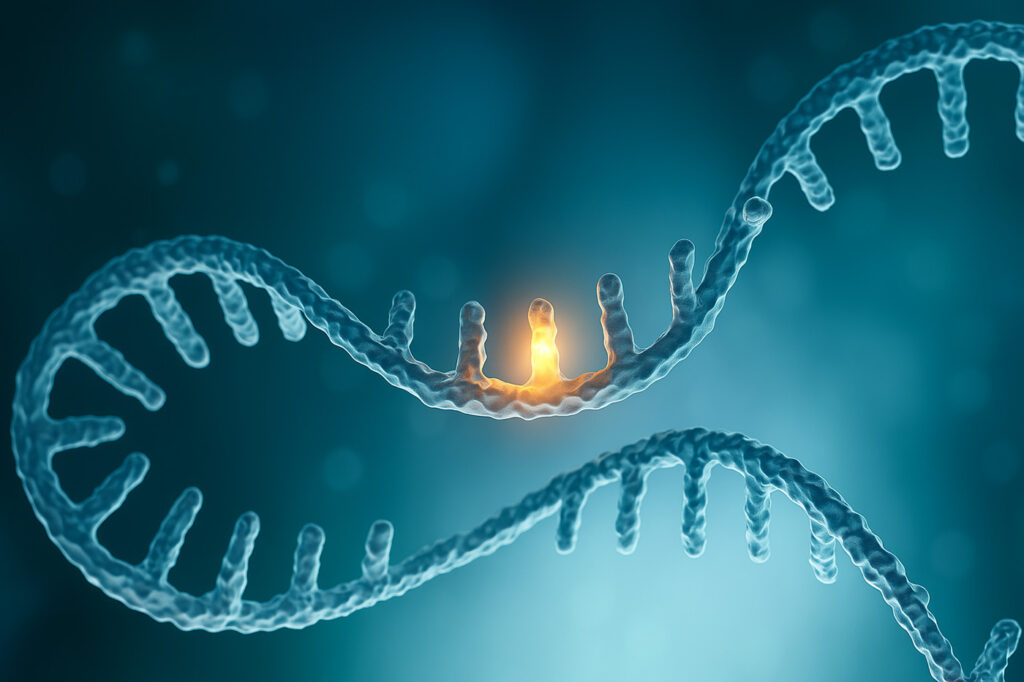
Sponsored content brought to you by
This year marks the 25th anniversary of the publication of the Human Genome Project, a monumental scientific achievement that has transformed healthcare and laid the foundation for modern genomics. Since its completion, whole-genome sequencing has become routine and powerful bioinformatics can relate DNA sequence to health and disease. For example, sequencing cancer genomes from tissue and body fluids has ushered in a paradigm shift from treating cancer based on its tissue of origin to identifying the best treatments based on driver mutations and genotype.
Despite this progress, many common diseases such as Alzheimer’s, heart attack, and stroke remain poorly explained by DNA variation alone. These conditions lack clear genetic biomarkers, limiting the opportunity to identify risks and to make informed health decisions before serious disease can develop. Moreover, DNA sequence alone does not explain the diversity and adaptability of the more than 200 different cell types of the human body.
A key missing link is epigenetic regulation, which comprises biological mechanisms for chemically annotating genetic information carriers and controlling when, where, and how the genetic code is expressed. These mechanisms include DNA methylation and histone modifications, both involved in transcription regulation, and RNA modifications, which act dynamically to influence protein translation and other aspects of RNA biology. The entirety of chemical modifications of RNA in a cell is referred to as the epitranscriptome.
Over the past five years, interest in epitranscriptomics has surged due to its role in cellular development and disease, as well as its potential in diagnostics, therapeutics, and biotechnology.
All human RNA species carry subtle chemical modifications, which have large functional consequences. In tRNA, 20% of all bases are modified at conserved positions to support protein-like function. In mRNA, the most abundant and well-studied modifications are N6-methyladenosine (m6A), pseudouridine (Ψ), inosine (I) and 7-methylguanosine in the cap. These modifications are dynamically regulated by three classes of enzymes: writers, erasers, and readers, which install, remove, and bind RNA modifications.
The principal m6A writer, METTL3, is known to be essential for embryonic stem cell development and differentiation, while FTO (fat mass and obesity-associated protein), a known eraser, was linked to obesity before it was implicated in RNA demethylation. Most RNA modifications are silent in conventional RNA sequencing; however, when academic labs introduced the first sequence-resolved detection methods in 2012, it prompted a global effort to uncover their functions and therapeutic potential.
Epitranscriptomics is already transforming biotechnology and medicine. In agriculture, genetic manipulation of m6A pathways has been shown to increase certain crop yields by up to 50%. In medicine, novel therapies are entering clinical trials. STORM therapeutics has developed METTL3 inhibitors for the treatment of myeloid leukemia, with early results showing tumor regression and good tolerance. Wave Therapeutics has launched its first trial for therapeutic adenosine-to-inosine RNA editing, using this RNA modification to correct a mutation causing alpha-1 antitrypsin deficiency.

RNA modifications are also emerging as biomarkers for multi-omics diagnostics companies. In a landmark for the field, Katalin Karikó and Drew Weissman received the 2023 Nobel Prize for discoveries on RNA base modifications that enabled mRNA vaccine development.
These examples are driven by technologies that read RNA modifications during RNA sequencing. Approaches to RNA modification sequencing include pull-down by antibodies, modification-specific chemical or enzymatic conversion, and direct nanopore sequencing. We are now entering a new era of discovery with commercial platforms such as EpiPlex™ from AlidaBio.
The EpiPlex assay uses barcoding and engineered molecular recognition to encode RNA modifications as part of NGS library preparation. These barcodes are then detected and quantified using the EpiScout™ analysis software. As these tools gain broader adoption and enable discoveries across diverse fields, we anticipate the next 25 years will build on the genome project’s legacy, unlocking new insights into human biology through the lens of RNA modifications.
To learn more, visit alidabio.com.



